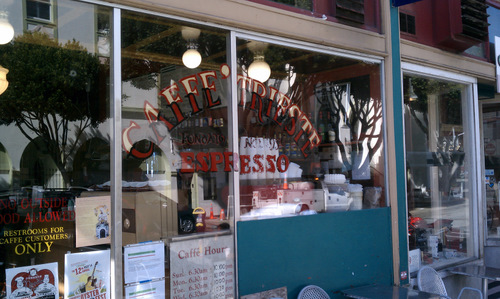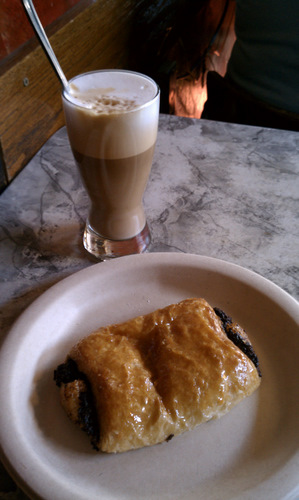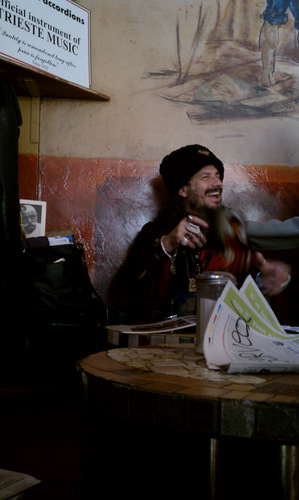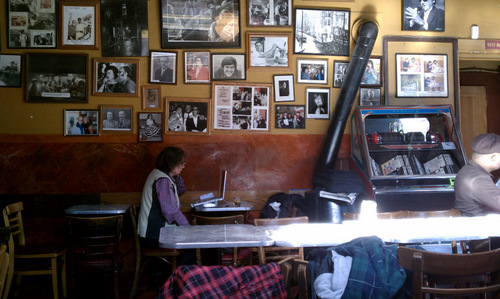What is it that makes a café a “local place,” or even what I would call a “neighborhood institution?” In my previous post about Xpression Coffeehouse, I wrote about how the owners want to make their café a place where the neighborhood gets together. But how does a café reach that goal? There may not be a single answer to that question, but I do know that some places are successful while others are not.
Last week, I visited the original Caffe Trieste in San Francisco, and it is a place that definitely has “it.” The café is the proverbial place “where everybody knows your name.” Although no one knew my name when I was in there, I was confident that after a few visits, many of them would.

Having great coffee is not the only way to become a neighborhood café. The first day I went to Trieste, in fact, I thought my espresso was barely drinkable. If I were going to base my experience solely on the coffee, I would not have gone back the second time. However, my pastry was excellent (it tasted a lot like a chocolate chip cookie) and the environment was fun, interesting, and full of character and quirk. I wanted to go back.
(The coffee was better the second time I went in (I ordered a latte instead of straight espresso). The barista surprised me when he made an “inverse” latte. He put the milk in the glass first, then poured the espresso over the top. His method would not win any barista contests, but in his own way, he was an artist.)
 A different kind of latte art
A different kind of latte art
Most of the patrons came from the surrounding neighborhood, or at least it seemed that way. The atmosphere was very welcoming, even if you were not a regular. Several writers were hunched over their laptops or their notebooks, pounding out their latest stories or commentaries. Over in the corner, there was a man with a Russian accent (I’ll call him the sage) who acted like he was the official greeter of the café. He was certainly well-known to the regulars. I overheard him explain to one of them that his friends were sitting at the table next to him (they were invisible). If you had been sitting there listening to him, I don’t think you would have been surprised by the conversation—it just seemed to fit him. He did not seem crazy, just eccentric. Portland does not have a monopoly on weird.
 The sage
The sage
On each wall, old and new photographs of family, friends and famous guests hung on the wall, chronicling the long history of the café. Caffe Trieste was established in 1956, so the café has had 55 years to create that neighborhood feel. It would be hard to duplicate this type of environment.
 I forgot to mention the jukebox
I forgot to mention the jukebox
Caffe Trieste is also famous for having live music. Above the table where the sage was sitting, a sign read that the accordion was the official instrument of the café. Fittingly, the second day I was there, a woman (in a very unique hat) was set to play the accordion and sing with her band. She was a local too. When she came in, several people who were already in the café greeted her and her guitar player as if they had known them for years. I suspect they had. Unfortunately, I didn’t get to hear the group perform because I had to catch the flight back to PDX. It was a shame that I had to miss the music. Perhaps next time. . .
After hanging out at Caffe Trieste, I got to thinking: is it possible to create a neighborhood institution, an anchor for the community in a short period of time? Or is having many years of history at a place the biggest key? What do you think? Are there any places in your neighborhood where people congregate because they know that they will always be welcomed, and where there will usually be someone they know present, no matter what time of day?